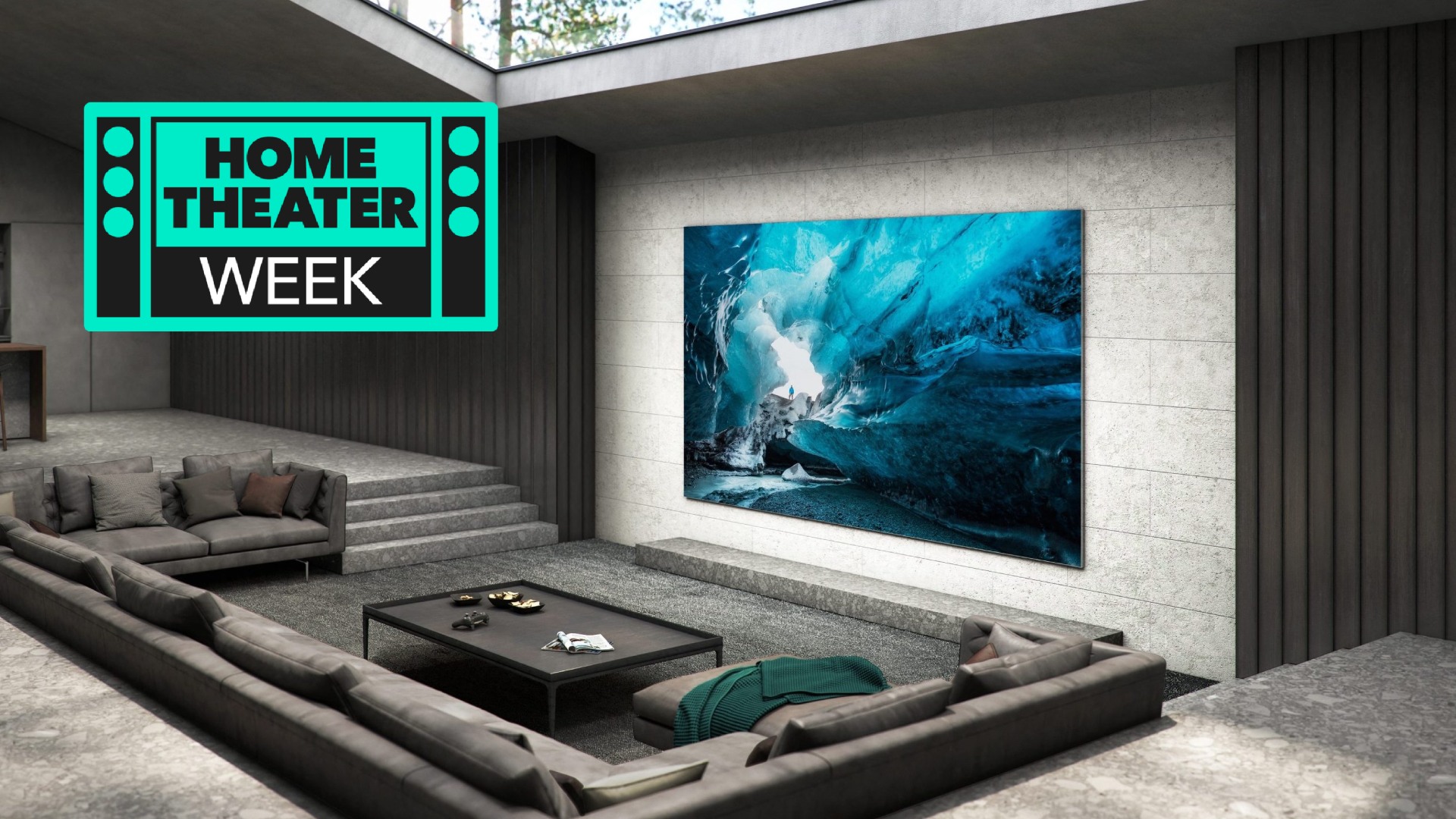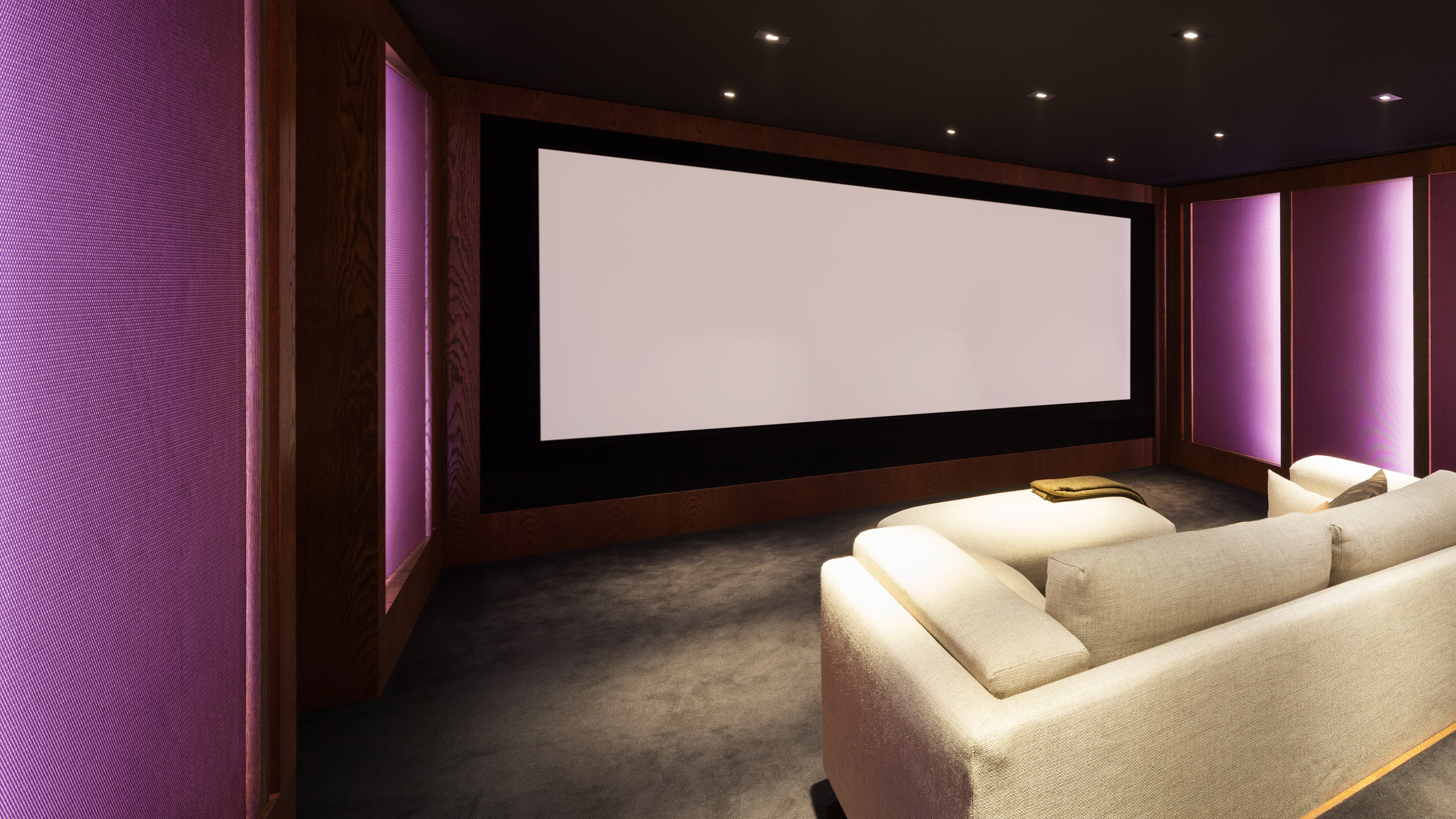Man cave to media room: the evolution of home theater, from CRT to MicroLED
Out of the darkness and into the light

Early home theaters – and by early I mean systems incorporating three-tube CRT projectors, LaserDisc players and maybe a THX Certified surround sound speaker package – were based on the 'man cave' concept, with a strong emphasis on the 'cave' part.
There was once a good reason for that since the first projectors designed for home theater use in the 1990s were extremely dim compared to the current best 4K projectors. To get a picture that even approached an acceptable brightness level, you needed a room with blackout blinds and either dark gray or black walls. It was even a good idea for the room’s furniture to be black.
Back then, it was even common in higher-end systems to use a 'stacked' configuration, with two separate CRT projectors simultaneously beaming the same image to effectively double-up the light output. With a typical projector of the day putting out a mere 35 nits peak brightness with its picture properly adjusted, that second projector was a very welcome addition, even if it did double the cost.

A brighter dawn
From these primitive beginnings emerged the modern home theater. In the early 2000s, CRTs gave way to DLP, LCD and LCOS, with the new projectors that used those technologies boosting the peak brightness level viewers could expect up to the 50 nits range – basically the same brightness as commercial movie theaters. Now we’re talking! In response, a new 'custom installation' industry emerged that lifted home theaters out of their dark age by focusing on room decor, seating, automated controls and lighting, and a multitude of other amenities to literally make home theaters more theater-like.
Audio was also a big part of this wave, with in-wall and in-ceiling speakers largely replacing floor space-hogging free-standing speakers. Movie soundtracks on disc got an upgrade to Dolby Digital and DTS 5.1, which provided the same discrete surround sound effects that could be experienced in movie theater sound systems. Alongside these innovations, acoustic room treatments, some of them sold as attractive decor-friendly wall panels, helped custom installers to create spaces that sounded as good as they looked.
While this next home theater phase was undoubtedly an evolution, the space itself remained solemn and closed-off, and it still needed to be mostly dark to get the best performance from the long throw projector positioned at the back of the room.

Out of the darkness
Today’s DLP, LCD, and LCOS projectors deliver much higher peak brightness than those earlier models – 150 nits or more can be expected from current home theater projectors – with many using a laser light engine that, unlike with conventional lamp-based projectors, can retain color accuracy while operating at or near maximum light output. Adding to their appeal, laser projectors such as the Epson Pro Cinema LS12000 and JVC DLA-NZ8 have a rated 20,000 hour lifespan, which means maintenance-free operation with no need to replace lamps.
Sign up for breaking news, reviews, opinion, top tech deals, and more.
While the new breed of bright projectors provide their best image quality when used in a dark, theater-like space, they can also look good in an environment with a medium level of ambient light. Performance here is helped greatly by the use of an ambient light rejecting (ALR) screen, a type that uses a gray-toned material which enhances picture contrast in medium-bright environments and also has an optical structure that reflects light beamed at it from directly in front while absorbing light hitting it from the sides.
Another new projector type is the ultra short throw projector. These models get installed close to a wall and project images onto a 100-, 120-, or 150-inch screen. A big benefit to ultra short throw projectors is that, unlike with a regular long throw projector that beams light from the back of the room, you can walk around without worrying about casting shadows on the projected image. They also feature built-in streaming capability and modestly powerful built-in audio systems, making then an all-in-one home cinema solution.

TVs: the new projectors
The key reason behind the popularity of projectors is that they deliver a big, theater-like image. And while the best TVs have been available for some time with screens approaching the 100-inch size of a typical projector screen, these have generally been much more expensive than a projector-plus-screen setup.
Not anymore. An LG G2 OLED TV with a 97-inch screen sells for $25,000, which isn’t exactly affordable when compared to a projector. But new ultra-large QLED models like the 98-inch TCL S5 sell for $5,000, about the same price as a budget projection system, and you’ll soon be able to buy a super-bright TCL QM8 Class mini-LED TV with the same screen size for $12,000.
A few years down the road, new MicroLED displays should also come down in price, providing an even better, and certainly brighter, option than today’s best 4K TVs. Like OLED TVs, MicroLED displays are a self-emissive tech that can completely switch off individual pixels to create deep blacks, and they are bright enough to provide high-contrast images even in well-lit rooms. MicroLEDs are also modular, with the individual MicroLED panels capable of being scaled up or down to create a display with any desired size or aspect ratio.
Given these new, brighter display technology options, there’s no reason why a home theater room can’t simply be any room in the home where you live, work, and play. A better name for such spaces is media room, because it’s a place where you can experience movies, games, and music without having to shut a door behind you and switch off the lights. Of course, there’s always the option to do just that, and there’s nothing wrong with having a movie palace-style home theater. But given the rapid evolution of home theater tech, such an environment is no longer mandatory.
You might also like

Al Griffin has been writing about and reviewing A/V tech since the days LaserDiscs roamed the earth, and was previously the editor of Sound & Vision magazine.
When not reviewing the latest and greatest gear or watching movies at home, he can usually be found out and about on a bike.